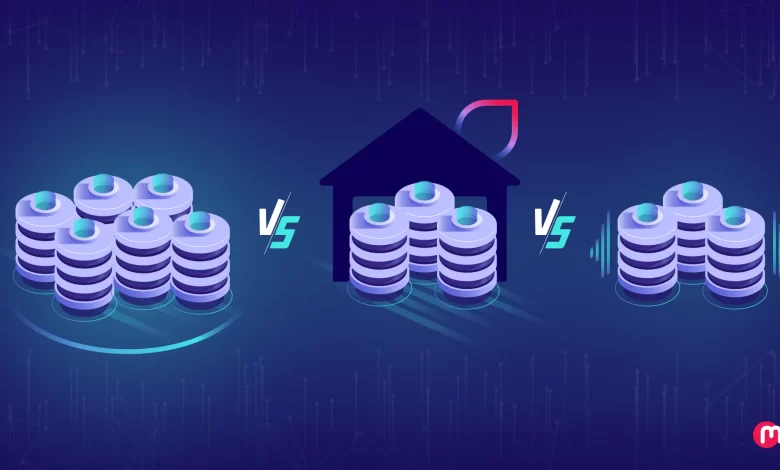Data Lake vs Data Warehouse vs Data Mart: Key Differences Explained

Data lakes, data warehouses, and data marts are essential components of a modern data strategy that organizations use to store, manage, and analyze data effectively. Understanding the differences between these data storage solutions is crucial for making informed decisions about which one best fits your business needs.
Data Lake:
A data lake is a centralized repository that allows you to store structured and unstructured data at any scale. It stores data in its native/raw format in cloud-based object storage without the need for pre-structuring. Data lakes are designed to handle large volumes of data from various sources like IoT devices, logs, social media, and more. Some popular data lake tools include Databricks Delta Lake, Snowflake, and Azure Data Lake Storage.
Data Warehouse:
A data warehouse is a centralized repository used to store, manage, and analyze large volumes of structured data from multiple sources like CRM and ERP systems. It is optimized for querying and reporting, providing a single source of truth across the organization. Data warehouses support historical data snapshots, complex joins, and aggregations, making them ideal for analytical workloads. Popular data warehouses include Amazon Redshift, Google BigQuery, and Microsoft Azure Synapse Analytics.
Data Mart:
A data mart is a subset of a data warehouse that stores department-specific data for business units. It organizes data based on business domains like HR, Sales, or Marketing and stores it in a structured form for quick access and analysis. Data marts are tailored for specific teams or departments, making them ideal for targeted reporting and analysis. Some popular tools for data marts are Snowflake, Google BigQuery, and Teradata.
Key Differences:
- Data Lake stores structured, unstructured, and semi-structured data, while Data Warehouse stores structured and semi-structured data.
- Data Lake uses raw, unfiltered data formats, while Data Warehouse uses processed, vetted formats.
- Data Lake follows a schema-on-read approach, while Data Warehouse follows a schema-on-write approach.
- Data Lake is designed for big data and real-time analytics, while Data Warehouse is optimized for business intelligence and reporting.
When to Use:
- Use Data Lake for storing raw, unstructured data and for big data analytics.
- Use Data Warehouse for structured data analytics and business intelligence.
- Use Data Mart for department-specific data analysis and quick insights.
In conclusion, choosing the right data storage solution depends on your data type, analytical needs, and scalability requirements. Data lakes, data warehouses, and data marts each have their strengths and are tailored for different use cases. By understanding these differences, organizations can make informed decisions and leverage their data effectively for business success.





